
Panfish such as crappies, bluegills and yellow perch are much loved by anglers across most of the country for their bountiful numbers, excellent flavor and willingness to take almost any bait they're offered. They're also perfectly sized for the frying pan, which is why they're referred to collectively as panfish. Frying isn't mandatory, though, and panfish can also be cooked in the oven. Fillets should be cooked quickly at high heat, while whole fish can cook longer at moderate temperatures.
Fillets
Step 1
Preheat your oven to 400 degrees Fahrenheit. Arrange your fillets in a single layer on a baking sheet, and spray or brush them lightly with oil or melted butter. Season with salt and pepper, your favorite spice blend or fresh herbs. Bake for eight to 10 minutes on the upper rack, until just done.
Step 2
Preheat your oven to 425 degrees Fahrenheit. Bread your fillets with seasoned breadcrumbs, cracker crumbs or fine cornmeal. Spray the breading with oil or pan spray to promote browning. Bake for eight to 12 minutes, turning once, until the breading is crisp and golden.
Step 3
Preheat your oven to 400 degrees Fahrenheit. Place each fillet on a sheet of parchment paper, approximately 12 to 14 inches square. Season it with salt and pepper; add a small piece of cold butter or a splash of white wine and herbs or other seasonings to taste. Roll up the edges of the parchment paper to make a sealed pouch, and bake for 20 minutes.
Whole Fish
Step 1
Preheat your oven to 375 degrees Fahrenheit. Pat the panfish dry inside and out with clean paper towels. Season the belly cavity lightly with salt and pepper. Cut three slashes through the skin on the top side of the fish. Brush or spray the slashes with oil, and sprinkle them liberally with your favorite spice mixture. Bake for 15 to 20 minutes, until just done.
Step 2
Preheat your oven to 350 degrees Fahrenheit. Simmer a quart of water with white wine, peppercorns, a bay leaf, a pinch of thyme and some onion. Strain out the flavorings. Arrange your panfish in a single layer in a casserole dish, and cover them with the flavored liquid. Bake for approximately 15 to 20 minutes if the liquid is hot, or 25 to 30 minutes if it's cold.
Step 3
Preheat your oven to 400 degrees Fahrenheit. Arrange the panfish fillets on a sheet or in a shallow baking dish. Brush them with melted butter, and season them lightly with salt and pepper. Bake for 15 to 20 minutes, brushing every five minutes with additional butter, until the fish are just done and the skin is crispy. If you wish, you can turn the fish midway through baking so the skin crisps on each side.
Related Articles

How to Bake Lingcod
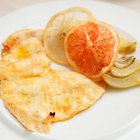
How to Cook Filet of Branzino
How to Cook a Bass Fillet
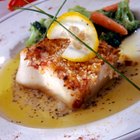
How to Pan Fry Sea Bass

How to Cook Steelhead Trout
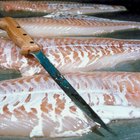
How to Grill a Cod Fish
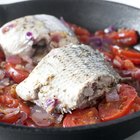
How to Cook Hog Fish
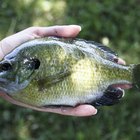
How to Cook Bluegill on the Grill

How to Cook a Pork Loin Fillet
How to Cook Atlantic Cod Fillets
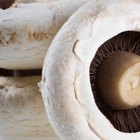
How to Cook Rockfish Fillets
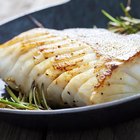
How Do I Pan Fry Fresh Fish With a ...
How to Cook Seasoned Keta Salmon

How to Cook Saba Fish

How to Cook Trevally
How to Cook Cobia
How to Cook a Turbot in the Oven

How to Cook Bream Fish

How to Cook Pickerel in the Oven

How Long Do You Cook Haddock Fillets in ...
References
- On Cooking: A Textbook of Culinary Fundamentals; Sarah Labensky, et al.
- Professional Cooking; Wayne Gisslen
Tips
- Panfish are done when the flesh in the thickest section begins to lose its pale, pearly translucence and turn white. Be careful not to overcook the fish -- especially thin fillets -- which will make it dry and chewy.
- If you're breading your fish, toast the crumbs ahead of time to pre-brown them. That way they're perfectly golden when the quick-cooking fish is done.
Warnings
- If you use the parchment-pouch method, be careful when opening the pouch. It will contain very hot steam and a quantity of cooking juices, either of which can scald your hands.
Writer Bio
Fred Decker is a trained chef and prolific freelance writer. In previous careers, he sold insurance and mutual funds, and was a longtime retailer. He was educated at Memorial University of Newfoundland and the Northern Alberta Institute of Technology. His articles have appeared on numerous home and garden sites including GoneOutdoors, TheNest and eHow.
Photo Credits
John Foxx/Stockbyte/Getty Images